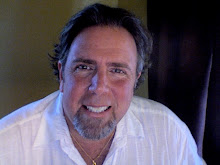Kat Bellucci: Last week we talked about taxes and the mutual funds inside our 401(k) plans. Now you want to peel another layer back on the mutual funds with a talk about performance.
Paul Petillo, Managing Editor of Target2025.com:
Paul: For quite sometime now, the mutual fund industry has warned investors that the past is no indication of the future. They call this disclosure. And investors use it as one of the default guides when making the choice of which fund to buy.
I don’t know about you, but I have been watching the Olympics with great interest and one thing you have to notice about the sports being played in Canada is how they are portrayed. Three winners emerge from amongst the competitors and we give them medals. But those that lost were the best in some other country – just not the best on this world stage.
And if you think about it, they all have plenty of reasons why they didn’t win. Perhaps the winners had better coaching, better training facilities, better financing, you name it, they came to compete as the best among the rest of their countrymen and women but there was always someone better. Someone who went faster, farther, didn’t fall. It is the same with mutual funds.
Kat: How so?
Paul: Mutual funds as we have discussed are nothing more than big teams of investors who hire a money manager to lead them to victory. He or she is the focal point. The one we give credit to when things do go right, the one we blame when things go wrong , the one who never seems to be on that end-of-the-quarter podium. Often, not even close.
We want to win. The problem is, we want what someone else has, that moment when we can say we did better than anyone. The spirit of competition, the grass is greener on the other side sort of thinking that gets us into trouble. So the first problem we have is with comparison.
Kat: Good point. What do up suggest we compare them to?
Paul: There are numerous ways to compare mutual funds and none of them good. The rule of thumb seems relatively straightforward and you will hear this from just about everyone: look for long-term performance, the cost of the fund, and the tenure of the manager in charge.
Kat: And I’d be willing to bet that it is not that easy, is it?
Paul: No Kat, it’s not. There are basically two kinds of funds out there. Passive funds (index funds, mutual funds that follow a published index or some other list) or actively managed funds (the fund manager buys and sells what she or he wants within the confines of the fund’s charter). Two different types of funds employing two different techniques.
Which makes the subject of performance much more confusing when actively managed funds are compared to indexes. Passive measures are poor indicators of what an active manager holds. This is why, so often, index investors make the claim that not only do passively managed funds offer a cost advantage but because the strategy of buy-and-hold limits volatility, they also increase returns by limiting exposure to unnecessary risk. Your cost for less risk however can be higher than the low cost of these funds. Also consider that index funds do not hold all of the stocks in the indexes they mimic. And actively managed funds hold even less.
Kat: So passively managed funds like indexes cost less but on the other hand, they limit risk. And less risk means less reward. So how do we judge actively managed funds if comparing them to an index is not such a great idea?
Paul: For quite sometime now, the mutual fund industry has warned investors that the past is no indication of the future. They call this disclosure. And investors use it as one of the default guides when making the choice of which fund to buy.
Over the last decade we have had two huge bubbles and two market reactions to those events. Had you purchased a mutual fund, any fund actively managed or indexed as a bubble reached its peak, the previous five years performance would not have included how bad it did the last time the bubble burst. If the bad year happened six years ago, a five-year performance chart would not have included it. Just by removing the bad year from the five-year returns made many funds appear much better to investors and they flocked to own them again.
Those five years offer the investor an average return. And averages suggest some odd things. If you line-up of one hundred people, ninety-eight of whom are six feet tall, it would not change the average even if the person on one end was ten feet tall and the one on the other end was three feet in height.
Kat: So the past really isn’t an indication of future results?
Paul: These days, to get to the top of a bull market usually takes five years. The bottom is usually hit in six months. This is a lot different than markets just a couple of decades ago. Bottoms were reached quickly while the top of the market was often a slow slog.
Kat: So we have the performance of actively managed mutual funds as compared by using index funds possessing some flaws. And past performance leaving us with no real picture of the future based on the past, how does one judge performance?
Paul: Without considering fees, look at the worst day the fund ever had and wonder, what if this was the day I began withdrawing money from it?
Kat: Can we talk more about this worst day performance measure next week?
